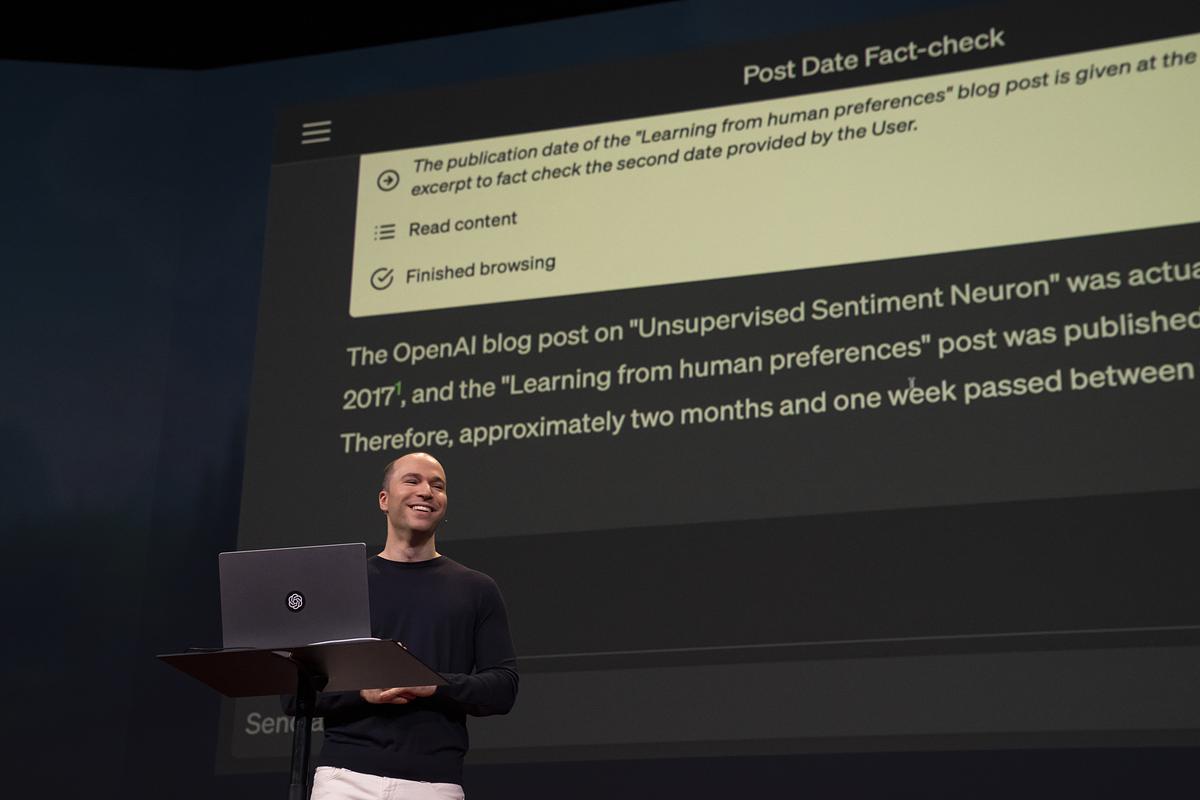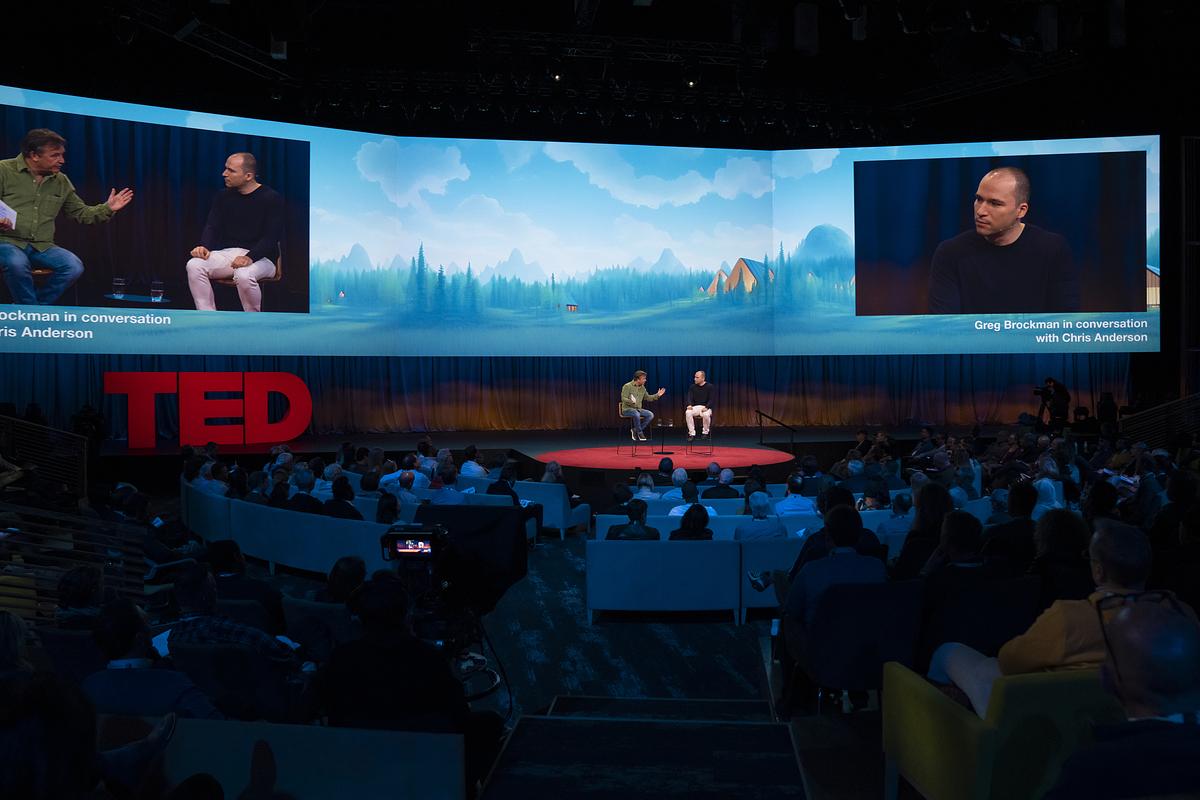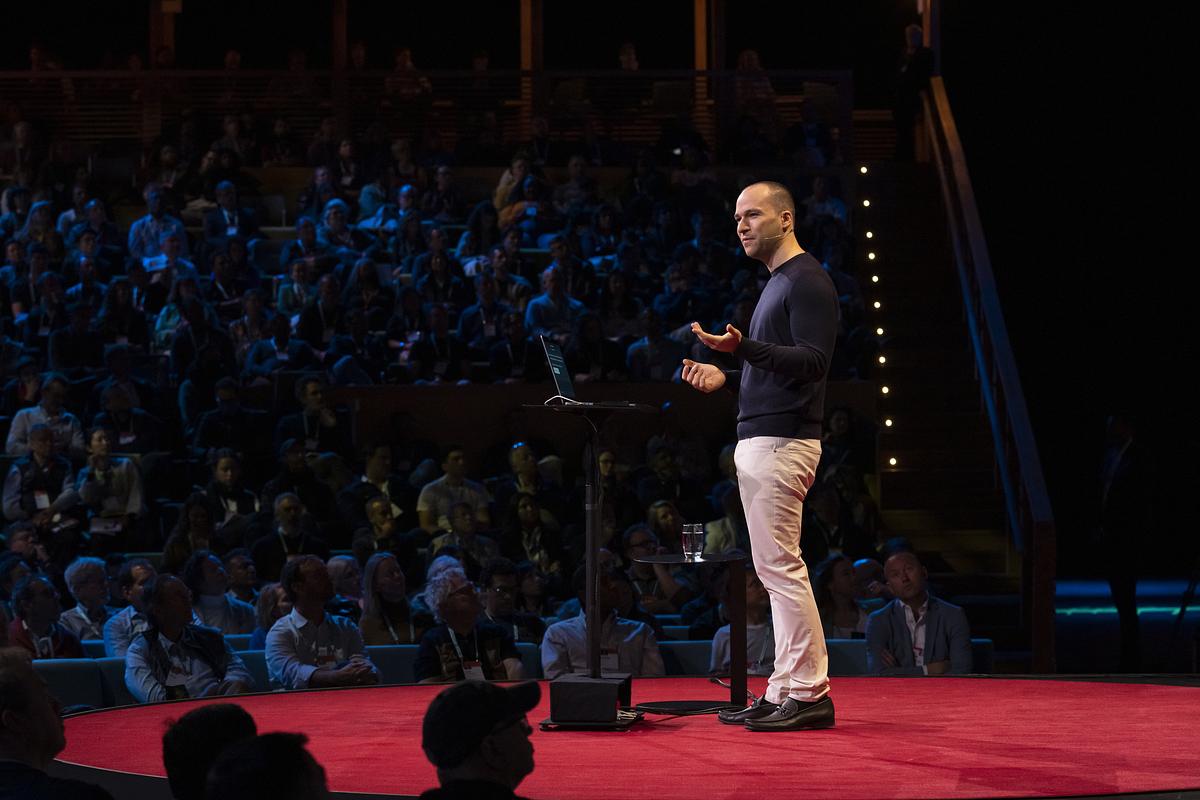ChatGPT stunned the world. What comes next?
Speaking live at Session 2 of TED2023 on Tuesday, OpenAI cofounder Greg Brockman took a peek under the hood of GPT-4 — the company’s most advanced large language model — and discussed why he thinks this is a historic moment to shape the future of artificial general intelligence (AGI).
Brockman projected his laptop onto the big screens in the TED Theater and demoed a series of mind-blowing, unreleased plug-ins for ChatGPT. Working live off the internet, he showed how ChatGPT could help you create a recipe for dinner, generate an image of the finished dish, draft a tweet about that dish and build the corresponding grocery list in Instacart — all without you ever having to leave the chatbot. He went on to demonstrate ChatGPT’s new ability to fact-check its own work (with citations you can click on) and interpret a data-intensive spreadsheet even when given relatively vague instructions.

OpenAI cofounder Greg Brockman speaks at Session 2 of TED2023: Possibility on April 17, 2023, in Vancouver, BC, Canada. (Photo: Gilberto Tadday / TED)
The idea, Brockman says, is that the machine learns to “align” with your intent. Just like you might teach a child a task without giving precise instructions, so too will the AI gradually learn to apply its knowledge to novel situations through a feedback loop with users. He hopes this will take the shape of a deep, trustworthy collaboration between humans and AI on the path to completing harder and harder tasks. Humans will be the managers and overseers of this work, Brockman says — the machine just executes the details.
Acknowledging that many people are nervous about the potential of AGI, Brockman nonetheless maintained his view that the technology will create a better world for everyone. The key to achieving this, he says, will be widespread participation and input from people on what the guardrails for the AI should be.

Head of TED Chris Anderson (left) and OpenAI cofounder Greg Brockman speak at Session 2 at TED2023: Possibility on April 17, 2023, in Vancouver, BC, Canada. (Photo: Ryan Lash / TED)
After the talk, head of TED Chris Anderson joined Brockman onstage to dig deeper into the timeline of ChatGPT’s development and the risks, raised by many in the tech industry and beyond, of putting such a powerful tool out into the world. Was it a responsible decision, or a reckless one? Brockman’s stance is that the best approach is to release the machine before it’s super powerful, see it in action and “let reality hit you in the face.” From there, he says, it’s our collective responsibility to provide feedback to the AI on the way to incremental improvement.
One way or another, Brockman says, AGI is poised to transform almost every aspect of how we use computers. It’s time that we all get literate in this technology.

OpenAI cofounder Greg Brockman speaks at Session 2 of TED2023: Possibility on April 17, 2023, in Vancouver, BC, Canada. (Photo: Gilberto Tadday / TED)